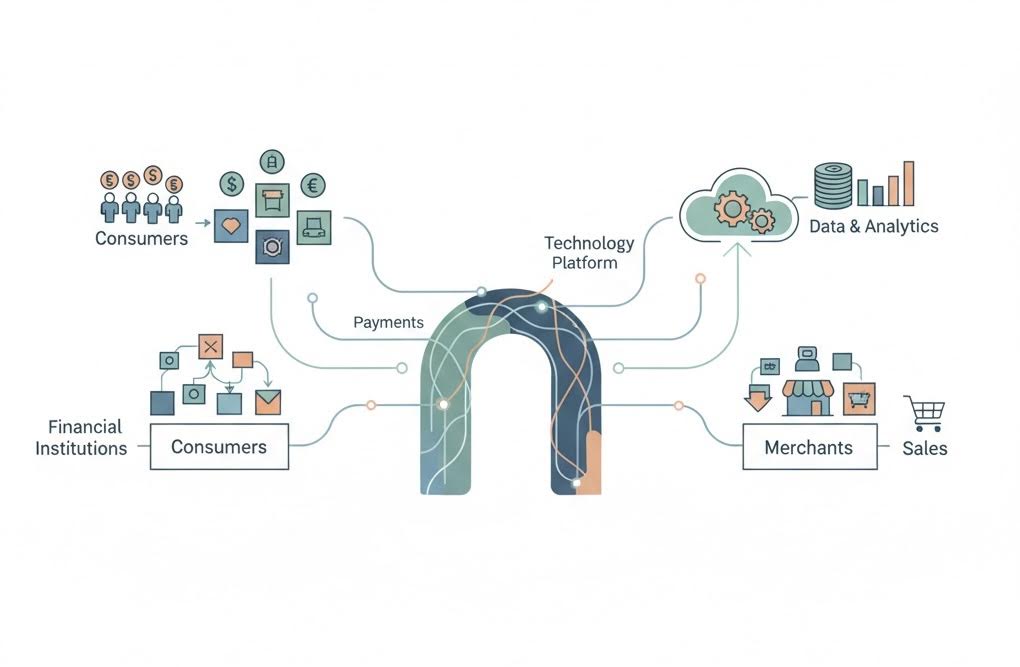PayPal vs. Fiserv: A Value Proposition Analysis in the FinTech Sector

PayPal vs. Fiserv: A Value Proposition Analysis in the FinTech Sector
The continuing decline in the share price of Fiserv (FI) brings into focus the question of opportunity within the broader financial technology and digital payments landscape. With my growing investment in Fiserv, I sought an alternative company in the same sector that could offer similar strategic value for diversification. PayPal (PYPL) has recently captured my attention, leading me to initiate an initial position in the stock as of today (11/06/25).
Comparative Financial Snapshot
A comparison of the two giants reveals a complex picture. As of this writing, Fiserv carries a market capitalization of approximately $33 billion, generating roughly $5.06 billion in free cash flow (FCF) in the most recently reported fiscal year (2024). PayPal, in contrast, stands at a market cap of $62 billion with a higher FCF of approximately $6.77 billion from the same prior year.
While Fiserv's lower market cap might suggest a greater potential for upside, I feel that its prospects could be hampered by its substantial debt burden and what I perceive as less cautious capital management. In this light, PayPal presents itself as a considerably safer investment, albeit with potentially lower near-term growth volatility.
My Prior Experience with PayPal
PayPal is a company where I have identified opportunity before. I established a position in the first half of 2023, acquiring shares in the $50–$62 range, and subsequently sold the entire position around $62. As the position was relatively small (under $2,000), the resulting profits were negligible. Although the price at which I initiated my current position—approximately $66 per share—is higher than my previous exit, the company's aggressive share repurchase program means the shares present a better value proposition now than they did at a lower price years ago.
The Strength of PayPal's Cash Flow
Examining PayPal’s cash flow history over the last four years demonstrates stability and growth: the company generated $6.88 billion in FCF in 2024, $4.22 billion in 2023, $5.11 billion in 2022, and $4.89 billion in 2021. This consistent FCF generation is a positive indicator. While this might be concerning for a company with consistently rising or overvalued stock, for one that appears undervalued like PayPal, it is highly encouraging. The stock's Price-to-FCF ratio of approximately 9 is compelling, given this level of consistency. Furthermore, as of the third quarter of this year (2025), PayPal has already generated $3.38 billion in FCF, putting it on track to comfortably exceed the $5 billion mark, aligning well with their full-year guidance in the $6 billion to $7 billion range.
Capital Allocation and Shareholder Returns
Over the four-year period from 2021 to 2024, PayPal issued $2.06 billion of debt. While any increase in leverage is a trend that warrants monitoring, the company's otherwise impeccable balance sheet mitigates this concern for now. Crucially, over the same timeframe, PayPal executed more than $18 billion in share repurchases, a substantial commitment considering its current $62 billion market cap. In 2024 alone, the company bought back close to $6 billion worth of stock, accounting for nearly 10% of its outstanding shares at the current market capitalization—an exceptional level of shareholder return.
My one consistent disappointment has been the lack of a dividend, as I prefer receiving a portion of shareholder returns in cash for strategic redeployment. I also note that the company has issued between $1.2 billion and $1.5 billion yearly in stock-based compensation (SBC) over this period. This is dilutive and partially offsets the positive impact of the significant share repurchases.
Financial Fortitude
A look at PayPal’s balance sheet reveals a robust financial position: $10.76 billion in cash and short-term investments against only $11.28 billion in long-term debt. This is a financial fortress. The company also maintains $20.2 billion in shareholder equity, which is solid for an entity valued at $62 billion that generates over $6 billion in FCF. Its goodwill and intangible assets are also reasonable at $11.17 billion. Finally, its revenue has consistently climbed over the last four years, from $25.37 billion to $31.80 billion, with net income remaining relatively stable, moving from $4.17 billion to $4.15 billion in the same period.
Conclusion and Strategy Shift
While Fiserv may appear to offer the most obvious upside potential given its sustained share price collapse, the risks embedded in its financials make the realization of that potential questionable. PayPal, in contrast, appears to be the more stable and fiscally disciplined company. It is worth noting that Fiserv’s most recent quarterly report suggests a shift toward greater fiscal responsibility, evidenced by a reduction in both share repurchases and debt issuance.
Initially, I did not view either Fiserv or PayPal as long-term core holdings, as neither historically paid a dividend—a key requirement for my enduring investments. However, in a surprising and welcome move, PayPal announced its first-ever quarterly dividend in October 2025 of $0.14 per share, with an ex-dividend date of 10/19/25 and a payment date of 10/10/25. This pivotal decision has transformed PayPal into a viable long-term investment for my portfolio.
I do not foresee Fiserv making a similar move soon, nor do I believe it would be advisable, as debt repayment should, in my view, be its primary focus. For this reason, PayPal will serve as a long-term play and a strategic buffer against the downside risk presented by Fiserv. My ideal scenario is that if Fiserv's share price appreciates meaningfully in the near term, I can exit that position and reallocate those funds into my growing PayPal holding.
It is important to remember that these companies operate in the highly competitive financial services and digital payments spaces, meaning risk is inherent, regardless of how secure their surface financials may appear.